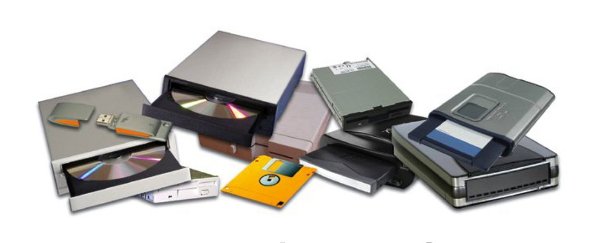
Backing up data is the process of making a copy (or more) of our data files—documents, spreadsheets, presentations, e-books, movies, music, browser bookmarks, settings, installed programs—almost everything. Fundamentally, the questions are:
- What to backup?
- When to backup?
- Where to backup?
- What type of backups to perform?
- Do you need more than one backup?
Types of backups
The simplest way to back anything up is to just dump the files onto a CD, DVD or USB drive. Such kinds of backups usually lead to disorganised backup sets. (A backup set is generally the set of media volumes on which the backup copy is stored. For example, when you take a backup of all your photos across five DVDs — this set of discs is the backup set.)
The best (and most expensive in terms of space) is a full system image backup. This captures and stores your PC’s entire hard disk (yes, all of it) in a set of “image” files — called so because they are just like a snapshot of your disk drive. This means everything gets backed up as it is. So when you restore such a backup, your system goes back to the exact same state it was in when you made the backup.
Then there is something called a differential or incremental backup. This type aims to backup only changed data. When the backup is first performed, it is a full backup. Subsequent backups are only of files that have been changed. This saves space that would have got wasted in duplicating files that have not been modified.
Backup media
Once you decide on what type of backup you want, you need to decide where this backup will happen. The most common media are discs (CDs, DVDs and Blu-Rays). But these have limitations on the amount of data they can store — using them means having a large number of discs. USB and other external hard disks are a more convenient mode of storage.
The new form of storage that’s been widely adopted is the cloud. For instance, Symantec offers something called Norton Online Backup that allows users to backup their data directly into the cloud. There is no need to worry about discs and drives or their maintenance — just back everything up to the cloud, and enjoy peace of mind. This, of course, works for users who have a decent Internet connection. In a country like India, where this is still a rarity, the concept of cloud backups will take time to seep in.
Onsite and offsite backups
Usually, backups are onsite, which means that the destination of the backup is in the same physical vicinity as that of the source. An example is backing up to USB media. Cloud backups, on the other hand, are in a different physical location — these are offsite backups. The main advantage of offsite backups is that in case of a physical disaster like an earthquake or fire, the data is still safe, since it is in some other part of the planet. A best practice would be to have an onsite backup for quick recovery, and an offsite backup for disaster recovery.
Backup hardware
But there is something in between the cloud and external drives, and it’s becoming increasingly prominent — I am talking about NAS (Network Attached Storage). It’s basically a hard disk sitting on your local network so that all your computers can be backed up to this central repository. What’s more, if your network has at least one wireless access point, backups then can be carried out wirelessly — not just of your PCs, but any Wi-Fi enabled device like your smartphone or home entertainment device, or even your Wi-Fi enabled TV. For the adventurous, NAS devices can be built at home, in the true DIY spirit, but that’s another story.
Backup software
I will highlight three main categories of backup software: generic backups, full-system images and specific backups. These are loose categories which are inter-related, but each has a utility that can be used depending on the nature of the backup you may want. There are varieties of backup software out there, both free and non-free. Given below are the best three open source versions that I have come across.
- Déjà Dup: This is a set-it-and-forget-it kind of software. Just select what to back up, where to back up and you’re good to go. It will run on an automatic schedule, and take care of all of the backup needs of a typical user. It can back up to all the media described above. It’s very versatile, and restoration of backed-up data is also just a click away.
- g4u: “ghost for unix” is a system-imaging backup solution. It’s a command-line-based utility that is usually run off a live CD to make a full system image.
- FEBE: This is a unique and very useful tool which backs up your complete Firefox profile — addons, bookmarks, settings, everything. The Firefox Environment Backup Extension is a life saver today, when we all have loads of bookmarks and extensions that we do not want to lose. Of course, there’s Firefox Sync — but that does not sync the addons. FEBE is a neat little extension that I recommend to all Firefox users.
Backups are our life jackets for a rainy day. (A very heavy downpour, if we’re talking about a life jacket! But you get the point.) It may require some discipline to get used to them, but there is nothing to beat the feeling when you realise that your hard disk is all smoke but your data is safe. Nothing beats peace of mind.
















































































